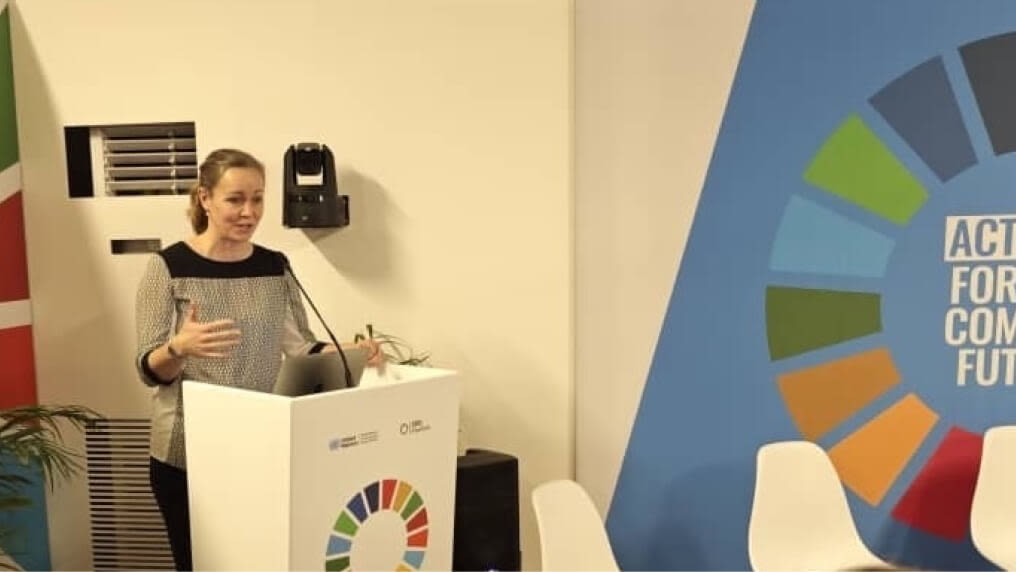“An agreement is only as good as its implementation. This historic consensus is only the beginning of the road.”- H.E. DR. Sultan Ahmed Al Jaber, President, COP28 UAE
What were the outcomes of COP28?
To the surprise of many, governments at COP28 managed to set a number of positive markers for the direction of travel going forward. To look at two internationally agreed achievements: first, consensus was reached on operationalising the Loss and Damage Fund, building on one of the key items from COP27 and helping to tackle the already apparent and devastating impacts of climate change. Second, the first-ever explicit call was made in the negotiated text to ‘transition away from fossil fuels in energy systems, in a just, orderly and equitable manner’ — a key systems transition that is needed to tackle the causes of climate change. Alongside these came a large number of additional agreements between countries.
Given the urgency with which climate action needs to be implemented this decade if temperatures are to have a fighting chance of staying within 1.5 degrees of pre-industrial levels (as noted in this year’s IPCC AR6 Synthesis Report and the first Global Stocktake), such agreements could not have come sooner. At the same time, there remains much more to do — both in terms of implementation, as the COP28 President himself said, and in pushing public, private, and finance sector action further so that we can deliver 43% of greenhouse gas (GHG) emissions cuts, relative to 2019, by 2030, and net zero by 2050. The IPCC AR6 and the first Global Stocktake both emphasised the need for systems transition if we are to bend the emissions curb. This includes the energy system transition, and the systems transition from a linear to a circular economycircular economyA systems solution framework that tackles global challenges like climate change, biodiversity loss, waste, and pollution. It is based on three principles, driven by design: eliminate waste and pollution, circulate products and materials (at their highest value), and regenerate nature..
What did COP28 mean for the circular economy?
In 2019, the Chilean COP25 Presidency included the circular economy transition in its climate plans. Since then, and in the four years that the Ellen MacArthur Foundation has attended the UNFCCC climate COPs, we have seen a positive increase in the number of discussions focused on how the transition to a circular economy is a much-needed part of climate action, complementary to and supportive of the energy transition. The increase was particularly noticeable this year — not only in the programme of side-events the Foundation formally participated in, as a speaker and moderator, but in the large number of other events we and others attended, ranging from side-events to ministerials.
This increased focus on the critical circular economy systems transition at this year’s COP is best reflected by its first-ever inclusion in the negotiated outcomes text. Whereas the COP27 negotiated outcomes noted ‘the importance of transition to sustainable lifestyles and sustainable patterns of consumption and production for efforts to address climate change,’ the COP28 outcomes explicitly noted ‘the importance of transitioning to sustainable lifestyles and sustainable patterns of consumption and production in efforts to address climate change, including through circular economy approaches, and encourages efforts in this regard.’
This inclusion sends a powerful signal for ongoing work to accelerate the circular economy transition in line with planetary boundaries and to contribute to climate action. Currently, 27% of countries refer to the circular economy in their Nationally Determined Contributions. The recently published UN toolbox is designed to support and deepen this integration, and is timely as countries are required to update and ratchet up the ambition in their NDCs at COP30, set to be held in Brazil. The transition to a circular economy in the private and financial sectors is equally key and was apparent in the many COP28 discussions. These discussions looked at circular economy climate contributions in relation to policies ranging from fiscal incentives to trade policies, as well as actions in systems such as urbanisation and agri-food systems, and the many sectors within these systems.
What comes next?
Addressing the 45% of emissions that arise from how we produce and consume and which are not dependent on the energy source being used — for example, emissions from production processes, emissions that result from deforestation and land-use choices, emissions from landfill, incineration, and open waste burning — is critical to get us on a Paris-aligned emissions trajectory. The circular economy systems transition is key to delivering these emissions reductions, and in designing resilience into our economic system and adapting to the effects of climate change that are a given at temperatures higher than pre-industrial levels.
As the COP28 President said, an agreement is only as good as the implementation that follows. We need to urgently move forward on bringing circular economy solutions to market at scale in tandem, and as part of, delivering the energy systems transition.

















